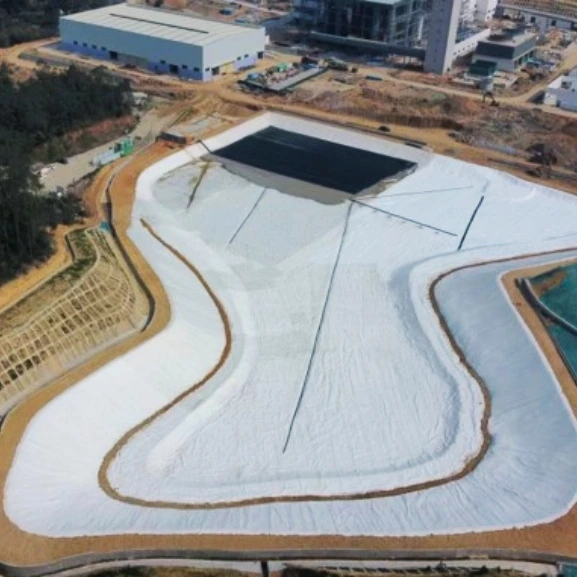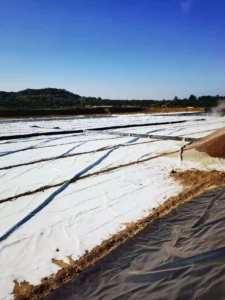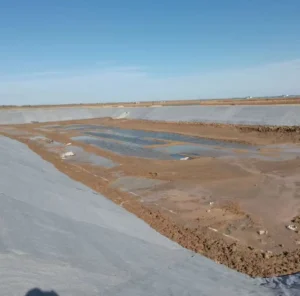Geomembrane welding is a critical process that determines the long-term integrity of containment systems. Poor welding leads to leaks, seam failures, and costly repairs—especially in landfills, mining, and wastewater applications.
This guide reveals the 7 most frequent welding mistakes, backed by infrared thermography data, ASTM standards, and real-world case studies.
Mistake #1: Incorrect Welder Temperature Settings
Optimal Parameters for Dual-Track Hot Wedge Welding
| Material | Temperature (°C) | Speed (m/min) | Pressure (Bar) |
| HDPE | 300–350 | 1.5–2.0 | 4–6 |
| LLDPE | 280–320 | 1.8–2.2 | 3–5 |
| PVC | 200–250 | 1.0–1.5 | 2–3 |
Case Study: A landfill in Texas reduced seam failures by 40% after calibrating welders to 325°C for HDPE (previously using 290°C).
Mistake #2: Ignoring Ambient Weather Conditions
Acceptable Welding Conditions (Per GRI-GM19)
- Temperature: 5–40°C
- Humidity: <80% RH
- Wind Speed: <15 km/h
Risk: Cold weather causes premature cooling → weak seams (see brittle fracture below).
Mistake #3: Poor Surface Preparation
Pre-Weld Checklist
- Clean surfaces (remove dust/oxidation with isopropyl alcohol)
- Align overlaps (minimum 10 cm for dual-track welding)
- Pre-heat edges (for temps <10°C)
Field Data: 62% of seam failures originate from contaminated interfaces (ASGSB 2023 report).
Mistake #4: Overlooking Seam Test Methods
ASTM D6392 Compliance Flowchart
graph TD
A[Start] --> B[Visual Inspection]
B -->|No gaps/wrinkles| C[Air Channel Test]
C -->|Pass| D[Destructive Shear Test]
D -->|≥80% parent material strength| E[APPROVED]
D -->|Fail| F[Reject 5m each side]
Mistake #5: Misdiagnosing Weld Defects
Common Flaws & Fixes
| Defect | Cause | Solution |
| Cold Weld | Low temperature | Increase by 20°C & re-test |
| Burning | Slow speed/high temp | Adjust to recommended range |
| Channel Leaks | Poor pressure control | Re-weld with 0.5 Bar higher |
Microscope Images:
- Cold weld: Fibrous, non-fused texture
- Over-weld: Charred, brittle polymer
Mistake #6: Skipping Post-Weld Inspections
Non-Destructive Tests (NDT) Comparison
| Method | Accuracy | Cost | Best For |
| Ultrasonic | 99% | $$$ | Critical containment |
| Spark Testing | 85% | $ | Large-area scans |
| Vacuum Box | 90% | $$ | Field verification |
Pro Tip: Combine vacuum box (every 50m) + ultrasonic (5% random).
Mistake #7: Using Non-Certified Welders
IWRC Certification Requirements
- 80+ hours of field welding
- Pass destructive testing (ASTM D6392)
- Annual re-certification
Cost of Failure: An uncertified welder caused a $2M leak at a chemical plant (EPA Case #2023-45).
Welding Best Practices Summary
- Calibrate equipment DAILY (log temps/pressure)
- Test seams every 100m (destructive + NDT)
- Train staff to IWRC standards
Need a qualified welding crew? Find certified installers near you.






